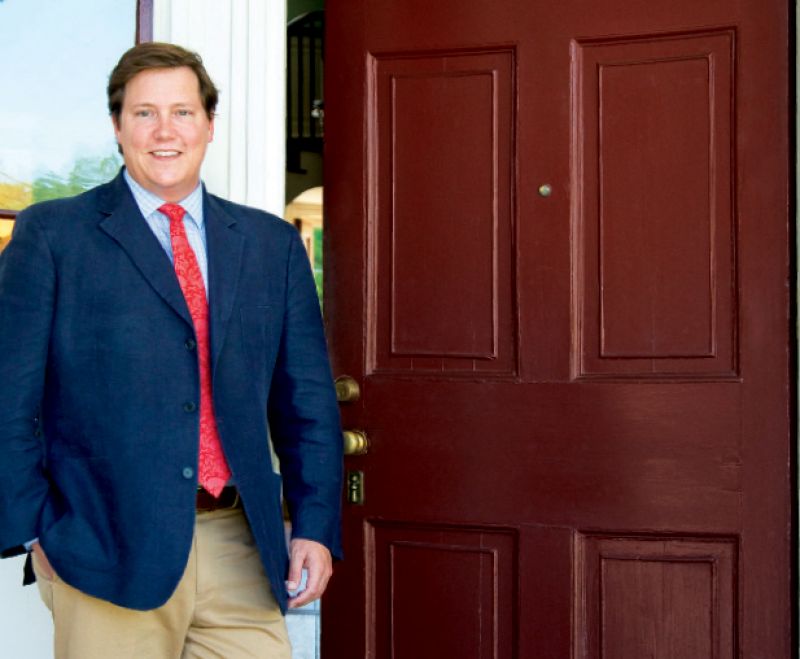
King outside the Joseph Manigault House, the first property that the Preservation Society of Charleston helped save. It’s now open for tours through The Charleston Museum.
Taking the helm of the country’s oldest community-based historic preservation organization during Charleston’s ”number-one U.S. city” era of rapid growth and change is no easy task. But when Kristopher King became executive director of the Preservation Society of Charleston last October—vacating his position as its board president—he was well-equipped, despite being just shy of 40. As the owner of the locally based King Preservation, he’d worked in real estate investment and development, focusing on restorations and redevelopment, and consulted on historic preservation. He’d taught historic preservation to College of Charleston and Clemson students, managed easements and technical outreach for Historic Charleston Foundation, and more. Here, get to know the downtown dad.
CM: What’s your approach to preservation?
KK: We have so much growth coming at this city, and I look at that as a tremendous opportunity, but we have to decide how we want to manage it. It’s about harmony. The society promotes good design that respects its context and good materials.
CM: What drew you to Charleston?
KK: I grew up in Aiken, but my family had a beach house on the Isle of Palms for 30 years. I learned the city as a tourist, through Spoleto and the restaurants. What I really love about architecture is embodied here, in its buildings and urban patterns.
CM: Why is Charleston special?
KK: All of the buildings and how they interact with each other and with the street. It has the greatest interplay of public and private spaces of any city in the world: house-piazza-garden, house-piazza-garden. Walk down the same street for a decade, and every day you’ll find something you’ve never noticed.
CM: So you walk to work?
KK: Yes, I walk my daughter to Ashley Hall with our dogs, drop the dogs off at home, then walk to my office on King Street, all within 30 minutes. I’m constantly taking photos—there’s so much texture, so much fabric to this city. It drives my wife bonkers.
CM: Is your “happy place” in the archives or on a job restoration site?
KK: I enjoy popping in on projects and love the physical side of the work—crawling through basements and attics. Whether it’s evaluating a historic structure to prevent demolition, or climbing a scaffold and talking with contractors on a random job, I learn something every time.
CM: Name a great restoration discovery.
KK: At 13 Pitt Street, we found an original gaselier [a gas chandelier] broken and discarded in the cistern. Moby Marks [of Richard Marks Restorations] was able to restore it and reunite it with its mate still hanging in the house. Also, crawling into the cistern, Marks pointed out a joist that was curved to allow a small child in to fish out any animals that had fallen in and perished there. That’s the stuff that typically gets gutted and renovated and no one ever knows.
CM: What’s your biggest pet peeve?
KK: Seeing people replace historic windows with vinyl ones. The materials that were used 200 years ago are so superior to what we have available today and are going to last longer than anything you replace them with. All you need to fix an old window is a crowbar, a scraper, and paint. Ten students and I could do an entire building in a weekend. Proper repair and weather stripping can address most of the energy concerns while saving money and preserving a house’s integrity.
Born: Aiken, South Carolina
Educated: Earned a bachelor’s in art history from Trinity College in Connecticut and a master’s in historic preservation from University of Pennsylvania
Lives: Downtown with his wife, Paige, and their children—”two with two legs [Hannah, five, and Teddy, two], and two with four.”
Little-known fact: ”I lived in my car for five months while fishing every trophy trout stream in the lower 48.”